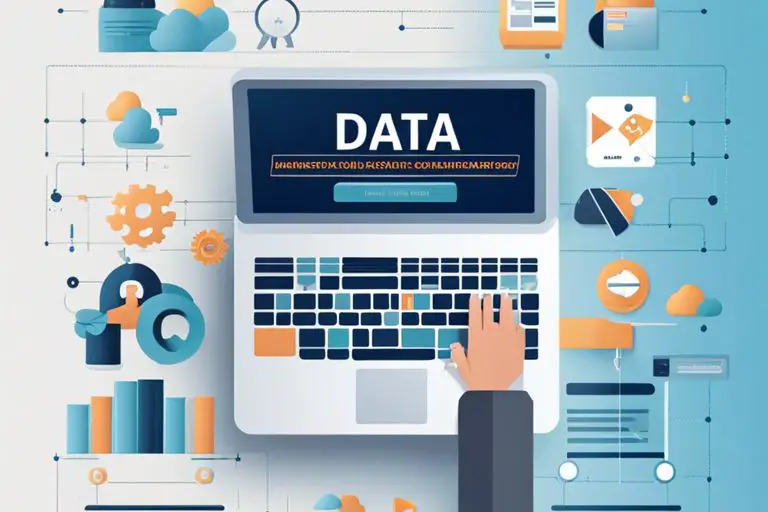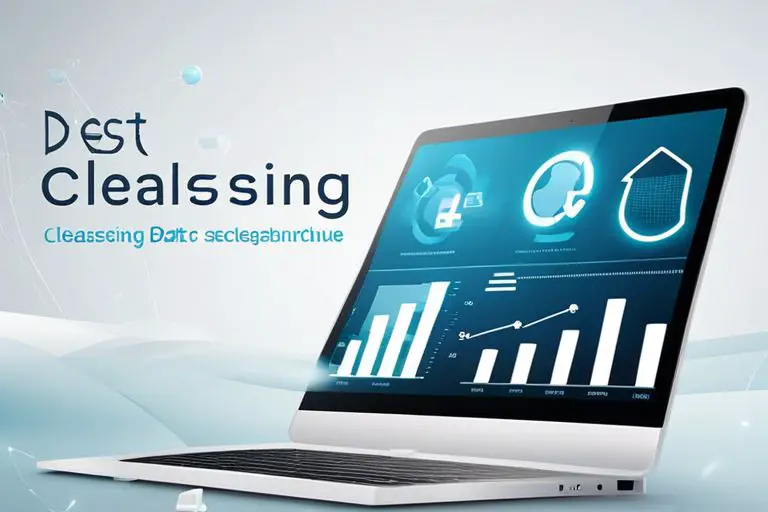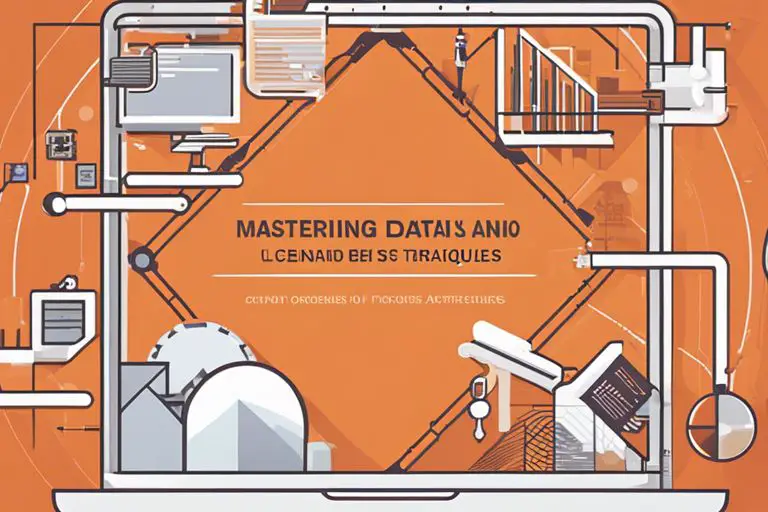Mastering Data Cleansing – Techniques and Best Practices course
This comprehensive course on data cleansing within SAP environments offers expert guidance and practical tools to enhance data quality and integrity. With 11 lectures and 5 hours of video content, participants will learn crucial skills such as identifying and resolving duplicate data, utilizing SAP’s data governance tools effectively, and maintaining ongoing data cleanliness. Whether you’re a novice or experienced in data management, this course provides a deep dive into data quality enhancement, equipping you to become a champion of data integrity in the digital age. If you’re a business end user, data analyst, IT professional, consultant, business manager, or SME owner, this course will provide you with invaluable knowledge and skills to optimize data quality and drive operational success.
Key Takeaways:
- Basics of Data Cleansing: Understand the importance and necessity of data cleansing in maintaining data integrity.
- Duplicate Data Identification: Learn techniques to identify and eliminate duplicate data within SAP environments.
- SAP MDG Principles: Gain proficiency in utilizing SAP’s data governance tools for data quality enhancement.
- Data Quality Improvement: Discover best practices for ongoing data cleanliness and optimization.
- Target Audience Benefits: Business end users, data analysts, IT professionals, consultants, business managers, and small to medium business owners can all benefit from enhancing their data quality management skills.

Preparation for Data Cleansing
You can’t start the process of data cleansing without proper preparation. Before plunging into cleaning your data, it’s necessary to follow a structured approach to ensure efficiency and accuracy. For a comprehensive guide on preparing for data cleansing, check out 7 Steps to Mastering Data Cleaning and Preprocessing.
Assessing Data Quality: Key Factors to Consider
With data cleansing it’s crucial to assess the quality of your data before making any changes. Consider factors like accuracy, consistency, completeness, and relevance to ensure your data is reliable and trustworthy. Recognizing the importance of these key factors will guide your data cleansing efforts effectively.
Creating a Data Cleansing Plan: How-to Guide
Clearly outlining a data cleansing plan is necessary for a successful data cleaning process. Start by defining your objectives, identifying the specific issues within your data, and setting timelines for completion. Your plan should also include steps for data cleaning, verification, and validation to ensure accurate results. Cleansing your data thoroughly and strategically will lead to improved data quality and better decision-making processes.

Core Data Cleansing Techniques
Now, for a deeper examine mastering data cleansing techniques, check out Mastering Data Cleaning Techniques with SQL – Explained …
Standardizing Data Formats: Tips for Uniformity
Little inconsistencies in data formats can have a significant impact on data quality. To ensure consistency and accuracy, it is important to standardize data formats. Here are some tips to achieve uniformity:
- Utilize data cleansing tools to automatically format data.
- Create data validation rules to enforce consistent formats.
- Regularly audit data formats to identify and correct discrepancies.
This attention to detail in standardizing data formats is crucial to maintaining clean and reliable data for decision-making.
Removing Duplicates: How-to Identify and Merge Records
Duplicates in a dataset can lead to inaccurate analysis and decision-making. By identifying and merging duplicate records, data integrity can be preserved. To remove duplicates effectively:
- Utilize data matching algorithms to identify duplicate records.
- Implement data deduplication processes to merge duplicate entries.
- Regularly monitor data quality to prevent future duplicates.
Data accuracy and reliability are paramount in data cleansing, ensuring that organizations can make informed decisions based on trustworthy data.

Advanced Data Cleansing Strategies
One way to enhance your data cleansing skills is by taking the Getting and Cleaning Data Course (Johns Hopkins) on Coursera. This course covers advanced concepts and strategies to improve data quality and integrity.
Utilizing Automation Tools: Factors for Efficient Cleansing
Pertaining to advanced data cleansing, utilizing automation tools can significantly increase efficiency and accuracy. Factors such as data volume, complexity, and quality metrics play a crucial role in determining the effectiveness of automation tools. Effective data mappings and proper configuration are crucial for seamless automation. Recall, thorough testing and validation are key to ensuring the success of automated cleansing processes.
Periodic Data Quality Audits: How-to Sustain Clean Data
On top of regular data cleansing processes, conducting periodic data quality audits is crucial to sustain clean and reliable data in the long run. These audits involve reviewing data sources, identifying discrepancies, and implementing corrective actions to maintain data integrity. Establishing clear data quality benchmarks and regular monitoring protocols are critical for ongoing data quality management. Regular staff training and documentation of audit processes are also necessary for sustaining clean data. Thorough audits can help identify patterns and trends in data issues, allowing for proactive solutions to prevent future errors.
One must remember that data quality is not a one-time task; it requires continuous efforts and vigilance to ensure that data remains accurate, reliable, and up-to-date. By implementing advanced cleansing strategies and conducting regular data quality audits, organizations can enhance decision-making processes, improve operational efficiency, and maintain a competitive edge in the market.
Best Practices for Data Cleansing
Developing a Data Governance Framework: Tips for Accountability
Not only is data cleansing important for maintaining data integrity, but establishing a data governance framework is also crucial for ensuring accountability in the data management process. To achieve this, consider implementing clear roles and responsibilities for data stewardship, setting up regular data quality assessments, and creating policies and procedures for data handling. Thorough documentation and transparent communication among stakeholders will help in ensuring accountability throughout the data cleansing process. Though data cleansing can be a tedious task, a well-structured data governance framework can streamline the process and enhance the overall effectiveness of data cleansing efforts.
Proactive Data Quality Management: How-to Implement Continuous Improvement
Little efforts towards proactive data quality management can yield significant benefits in maintaining continuous improvement of data quality. By incorporating regular data assessments, data audits, and data optimization techniques, organizations can ensure that their data remains accurate and reliable for decision-making purposes. Implementing data cleansing best practices as part of an ongoing data quality management strategy can help in identifying and resolving data issues before they escalate, ultimately leading to enhanced data integrity and operational efficiency.
Final Words
With this in mind, the Mastering Data Cleansing – Techniques and Best Practices course is a must for anyone looking to excel in data management within SAP environments. From understanding the basics of data cleansing to mastering techniques for identifying and resolving data duplicates, this course equips you with the imperative tools to maintain data integrity and reliability. Whether you’re a business end user, data analyst, IT professional, consultant, or business owner, the knowledge and skills gained from this course will undoubtedly enhance your ability to make informed decisions based on accurate and clean data. Take the first step towards becoming a champion of data quality in the digital age by enrolling in this comprehensive and practical course.
FAQ
Q: What is the main focus of the “Mastering Data Cleansing – Techniques and Best Practices” course?
A: The main focus of this course is to equip you with imperative tools and techniques for effective data cleansing within SAP environments, bridging the gap between theoretical knowledge and practical application.
Q: What will I learn from this course?
A: By taking this course, you will learn the basics of data cleansing and its necessity, identifying and resolving data duplicates, data quality metrics and assessment techniques, SAP MDG principles, techniques to correct data in SAP and other environments, and best practices for data quality improvement.
Q: Are there any prerequisites for enrolling in this course?
A: While not mandatory, having a basic understanding of data concepts, an interest in data management, computer literacy, familiarity with Microsoft Excel, and access to an SAP environment will be beneficial for maximizing your learning experience in this course.
Q: Who is this course designed for?
A: This course is designed for a wide range of individuals, including business end-users, data analysts, data scientists, IT professionals, consultants, implementers, business managers, decision-makers, and small to medium business owners, who are interested in enhancing the quality and reliability of the data they manage.
Q: How will this course benefit me in my professional endeavors?
A: This course will enable you to become proficient in data cleansing techniques, ensuring data accuracy and reliability for decision-making processes. It will empower you to maintain data cleanliness, optimize operational efficiency, and make strategic, informed decisions based on reliable and accurate data.

